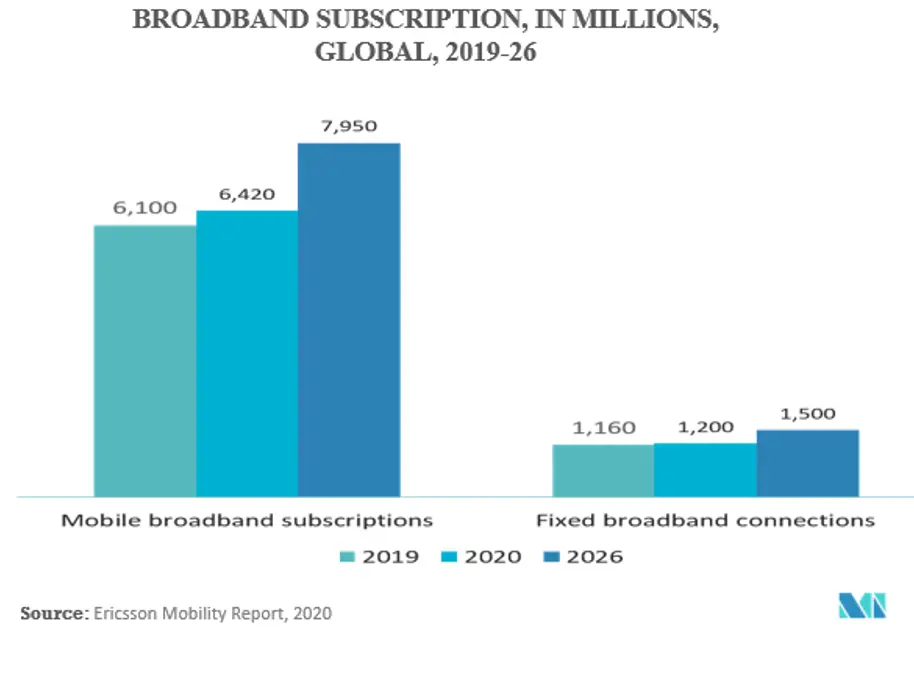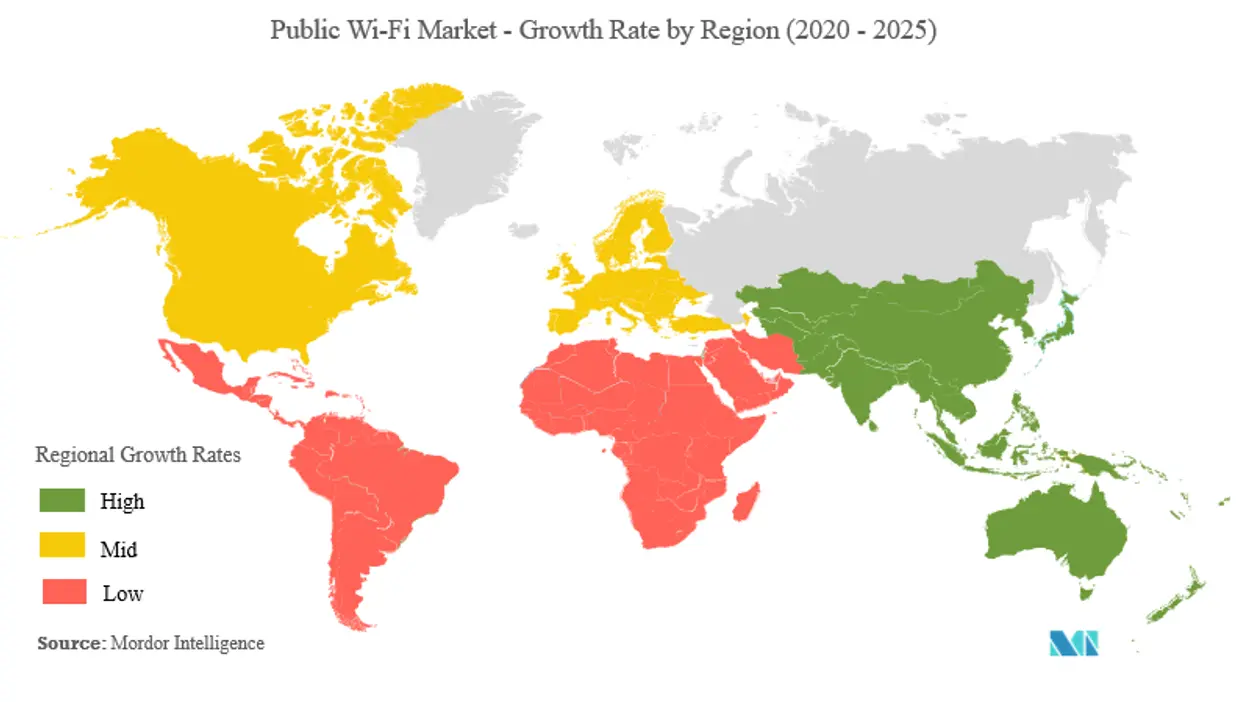Market Trends of Public Wi-Fi Industry
This section covers the major market trends shaping the Public Wi-Fi Market according to our research experts:
Role of Government in Accelerating Regional Penetration of Wi-Fi
- Governments across different geographies are focusing on public Wi-Fi penetrations to accelerate the adoption of broadband connections. According to Ericsson, the global number of fixed broadband connections is expected to reach 1.5 billion by the end of 2026. It also forecasted that 5G would see 340 million subscriptions by the end of 2026 in the North America region only. Hence such growth is expected to influence the public Wi-Fi market’s growth in the future positively.
- Players present in the market are boosting the public Wi-Fi penetration across regions, which is creating opportunities for the market in recent years. According to Cisco, there are still approximately 3.7 billion people who remain unconnected currently. 14% of the United States households with school-aged children do not have internet access. This is something critical with the current situation’s distance learning movement. Cisco identifies this digital divide and actively working to bring people in rural United States areas online in a different way. The company has taken its first step in addressing the issue by identifying different barriers to ubiquitous connectivity.
- Governments, non-profit organizations, and enterprises are also coming together to push towards internet access for the major population. Recently, Cisco Systems had worked with public libraries in the Arizona state to allow teachers and students to participate in and conduct digital learning. In collaboration with the State of Arizona, Cisco seeks to expand public Wi-Fi access to highly-required communities across the state, allowing people to stay connected during the COVID-19 pandemic. Cisco had planned to install external wireless access points at libraries, where teachers and students can conduct distance learning, and people can access the Wi-Fi from outside of the library building.
- In June 2020, the United States Federal Communications Commission (FCC) voted to adopt the auction procedures to provide up to USD 16 billion to areas, which lack broadband services. This includes nearly 6 million rural houses and enterprises. The FCC proposal also planned to allow low earth orbit satellite systems, those made by SpaceX, to take participate in the auction. SpaceX was developing a low latency internet broadband system using low earth orbit satellites.

Asia Pacific to Witness the Highest Growth
- Increasing penetration of free Wi-Fi access in major cities and public spaces across the region boosts the growth of the market studied. Public Wi-Fi access offers affordable, scalable, and versatile resources to facilitate the spread of internet access and will play a major role as the countries like India, China, and Japan, among others, move toward 5G.
- A recent ICRIER BIF study estimates the internet’s contribution to India’s GDP at about 16% or USD 534 billion by 2020. So, there is a significant opportunity to be explored, as several investors are willing to invest in the region. According to Cisco’s analysis, in India, the number of public Wi-Fi hotspots were 0.06 million in 2015, and clocks to 4.2 million in 2020.
- Earlier the country had proposed the National Digital Communication Policy (NDCP) 2018, which has set significant targets for Public Wi-Fi hotspots in the cities and the rural areas under Connect India. This is creating a Robust Digital Communication Infrastructure, which enables the deployment of public Wi-Fi Hotspots. This had a target to reach 5 million by 2020 and 10 million by 2022. Under the policy, the country has chalked out the ‘NagarNet’ plan for establishing 1 million hotspots in cities and ‘JanWiFi’ to establish 2 million hotspots in rural areas.
- The Telecom Regulatory Authority of India (TRAI) recommends a Liberalized Approach to Public Wi-Fi and the exclusive WANI standard for inter-operability between public hotspots.
- In December 2020, India's government had revealed the plans to launch public Wi-Fi across the country called ‘PM-Wani.’ The three-tier system was aimed at offering last-mile connectivity and bringing India’s population of approximately 1.36 billion online. According to the Ministry of Electronics and Information Technology, anyone can sign up to become a public data office (PDO). They don’t require to apply for a registration, license, or cough up fees.


